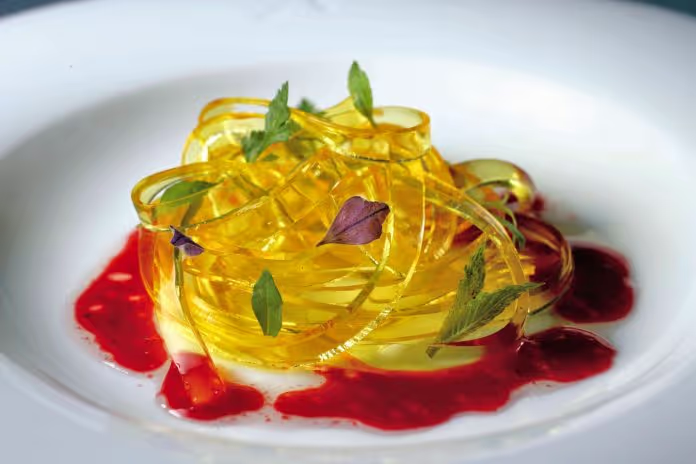The Evolution of Molecular Gastronomy and Its Unique Relationship with Tableware
Ceramic Tableware
By: Jeff
05 Nov 2025

Molecular gastronomy has transformed the world of fine dining by merging science and culinary arts. But beyond foams, gels, and liquid nitrogen, one of the most fascinating aspects of this movement is the way it revolutionized the use of the dinner plate and other tableware. Unlike traditional dining, where food conforms to the shape of the plate, molecular gastronomy makes the dinnerware part of the experiment—sometimes even part of the sensory illusion.
From Classical Cooking to Culinary Science
The roots of molecular gastronomy go back to the 1980s, when scientists Hervé This and Nicholas Kurti began studying the chemistry behind everyday cooking. They asked: What makes a soufflé rise? Why does chocolate seize with water? Their curiosity laid the scientific foundation for chefs to push culinary boundaries.
By the late 1990s and early 2000s, chefs like Ferran Adrià, Heston Blumenthal, and Grant Achatz transformed these studies into edible art. Traditional dinner plates were no longer enough to present a deconstructed olive or an edible helium balloon. Molecular gastronomy demanded a complete rethinking of tableware.
The Shift From Traditional Dinner Plates to Experimental Surfaces
In classical dining, the dinner plate served as a flat, elegant canvas. In molecular gastronomy, however, the plate could be a stone, a mirror, a glass sphere, or even a spoon suspended in the air. The purpose was not just presentation—it was storytelling, interaction, and emotion.
Standard dinnerware gave way to custom-made pieces. Restaurants curated dinner sets with test tubes, slate boards, miniature cloches, pipettes, and asymmetric ceramics. Each piece of tableware had to support the visual illusion while enhancing texture, temperature control, and aroma.
Sensory Dining and the Role of Tableware
Molecular gastronomy doesn't just appeal to taste—it engages all senses. The tableware plays a central role in this sensory orchestration:
Sound: Some dishes are served on vibrating plates or accompanied by soundscapes played through table speakers.
Touch: Textured dinner plates and hand-molded ceramics enhance tactile sensations.
Sight: Transparent glass bowls, laboratory beakers, or even edible "plates" made from sugar allow diners to see every layer and reaction.
Smell: Aromatic woods, smoke-filled domes, and scented dinner sets heighten the experience before the first bite.
Custom Dinnerware: Where Design Meets Function
To support its theatrical presentations, molecular gastronomy led to collaborations between chefs, ceramicists, glass artists, and industrial designers. Instead of buying premade dinnerware, many top restaurants commissioned bespoke dinner sets matching their food philosophy.
El Bulli used custom-built spoons and plates to serve spherified dishes.
Alinea developed floating wire frames and silicone mats to replace traditional dinner plates.
The Fat Duck introduced perfumed pillows beneath glass plates to release aroma when the dish was placed on the table.
Each piece of tableware was crafted to elevate both science and poetry.
Today and Beyond: Sustainability and Innovation
Modern molecular gastronomy is moving toward sustainability. Alongside cutting-edge design, chefs now seek eco-conscious dinnerware materials like recycled glass, biodegradable ceramics, and edible containers.
Future dinner sets may incorporate temperature-regulating surfaces, self-heating plates, or even smart tableware that tracks nutritional information or diner reactions in real time.
Conclusion
From laboratory-inspired creativity to sensory-driven art, molecular gastronomy has forever changed the way we see the dinner plate. No longer just a vessel, it is a stage where science, emotion, and craftsmanship collide. Whether it’s a minimalist ceramic dish or a high-tech custom dinner set, tableware is now an essential part of the culinary narrative.


